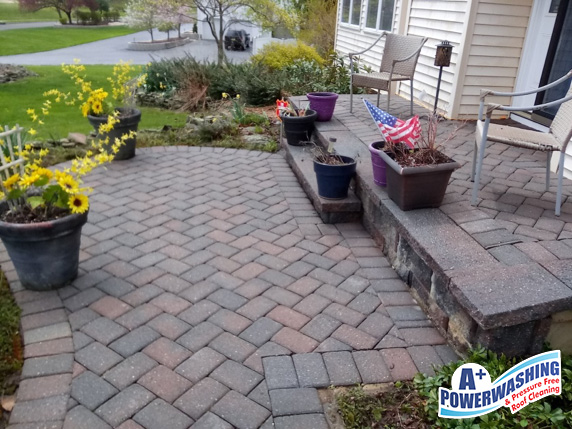Pressure Washing Brick
The Do’s and Don’ts of Pressure Washing Brick

Pressure Washing Brick
Pressure washing brick can be a great way to clean it and restore its color, but there are some things you need to keep in mind. Pressure washing brick is a great way to clean it and restore its natural color. It is also a great way to remove any dirt, grime, or other build-ups that have accumulated on the surface. Brick is a porous material, so it is important to be careful when pressure washing it. However, there are certain do’s and don’ts that you need to keep in mind when pressure washing brick.
Pressure washing is a great way to clean the exterior of your home, and brick is a popular material to pressure wash. It is important to follow some basic guidelines when pressure washing bricks, however, in order to avoid damaging the material.
Here are some dos and don’ts to keep in mind when pressure washing your brick home:
DOs:
- Start with a lower-pressure setting. You can always increase the pressure if needed, but starting with a lower pressure will help avoid damaging the brick. This is especially important if the brick is older or more delicate.
- Use a wide-angle nozzle. This will help distribute the water pressure more evenly over the surface of the brick and avoid concentrated areas of high pressure. You may need to experiment with different nozzle sizes to find the one that works best for your pressure washer.
- Hold the nozzle about 12 inches from the surface of the brick. This will help avoid damaging the brick while pressure washing while still providing enough pressure to remove dirt and grime. You may need to adjust this distance depending on the pressure of your washer.
- Move the nozzle in a side-to-side sweeping motion. This will help ensure even coverage and avoid streaks. You may need to make several passes over the same area to completely remove all the dirt and grime.
- Rinse the brick with fresh water after washing it with detergent. This will help remove any residual soap or detergent that could cause streaking.
DON’Ts:
- Use a pressure washer with a pressure greater than 3000 psi. Anything above this pressure could damage the brick. This is especially important for older or more delicate bricks. You may need to use a lower pressure if the brick is very dirty.
- Use a zero-degree nozzle. This type of nozzle can concentrate the water pressure into a very small area and easily damage the brick. Stick with a wide-angle nozzle to avoid this problem.
- Use a detergent that is not specifically designed for pressure washing. Some detergents can actually damage the brick. Only use a pressure washer detergent that is designed for use on brick.
- Hold the nozzle too close to the surface of the brick. This can concentrate the water pressure into a small area and damage the brick. Hold the nozzle about 12 inches from the surface of the brick to avoid this problem.
- Allow the detergent to dry on the brick. This can cause streaks or spots. Rinse the brick thoroughly with fresh water after washing it with detergent to avoid this problem.
If you’re looking to clean the exterior of your home, pressure washing is a great option and brick is a popular material to pressure wash. Just be sure to follow some basic guidelines in order to avoid damaging the material. By following the dos and don’ts above, you can pressure wash your brick home safely and effectively.
126 W Main St, Farmingdale, NJ 07727
(732) 775-1242
